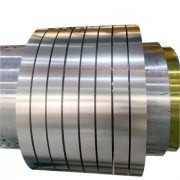Stainless Steel Strip is an austenitic chromium-nickel-manganese stainless steel that offers electromagnetic properties like electrical resistivity, magnetic permeability & electrical conductivity and Young’s Modulus of Elasticity. We offer these stainless steel strips in various material grades such as Stainless Steel 304 Strips, Acciaio inossidabile 310 Strips, Acciaio inossidabile 316 Strips, Acciaio inossidabile 904 Strips and many more.
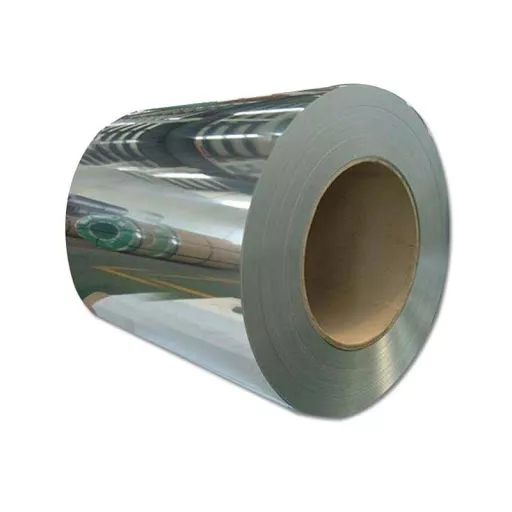
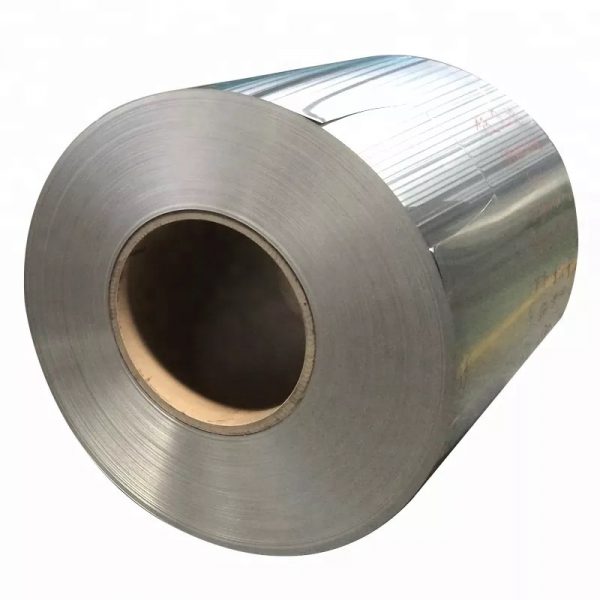
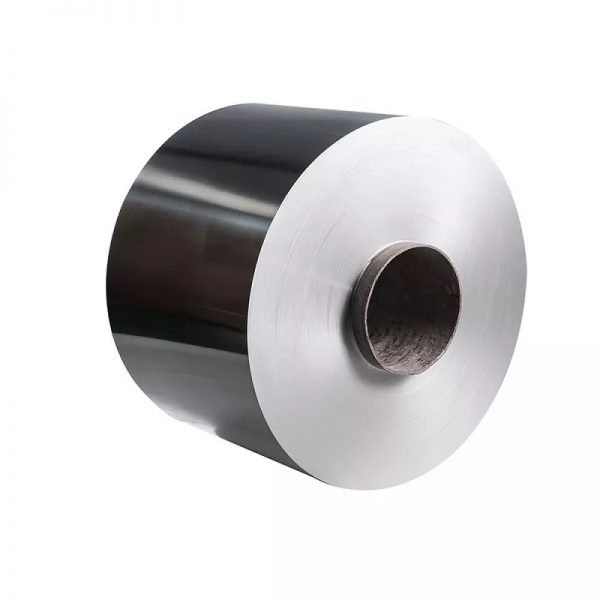
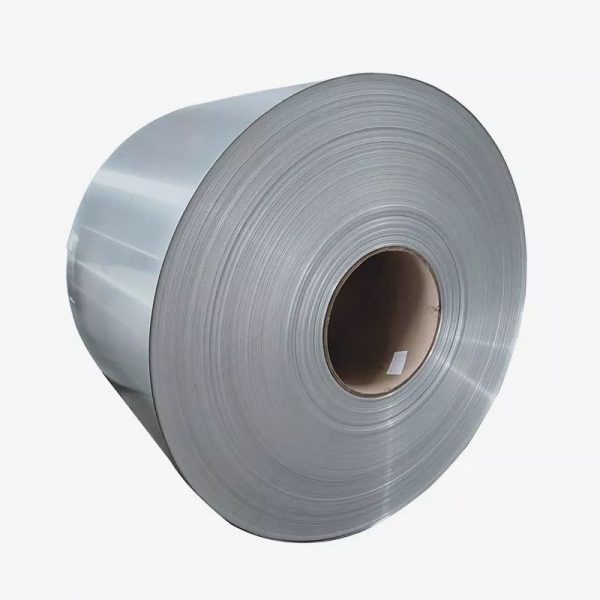
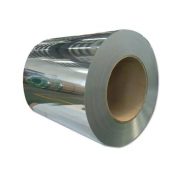
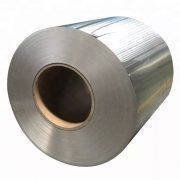
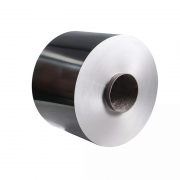
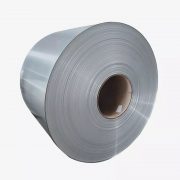
Bobine di titanio
A causa della scarsa conduttività termica del titanio puro, L'emulsione con un buon effetto lubrificante e eccellenti prestazioni di raffreddamento è richiesta nel processo di laminazione, e la velocità di rotolamento non dovrebbe essere troppo veloce, al fine di prevenire l'alta temperatura del titanio puro e causare il fenomeno del "rullo adesivo", e "rullo adesivo" con conseguente superficie ruvida di titanio e scarsa qualità. L'acqua e l'olio residui sulla superficie della striscia di titanio si decompongono durante il processo di ricottura, che influenza la pressione parziale dell'ossigeno nel forno e fa sì che la reazione di decomposizione vada nella direzione opposta, formando ossidazione sulla superficie del nastro di titanio e influenzando la qualità di ricottura. Perché la ricottura della striscia di titanio prima della pulizia completa e della superficie della piastra di asciugatura. La velocità di sgrassaggio del nastro di titanio è generalmente di 20 m / min, e la velocità viene regolata in base alla qualità superficiale della striscia di titanio dopo lo sgrassaggio. Il raddrizzamento serve a garantire la planarità della piastra del prodotto.
- Descrizione
- Indicazioni
- Inchiesta
Processo di produzione
Cold rolled titanium coil due to different production processes (or finished product surface) generally divided into cold rolled pickling surface titanium coil and cold rolled glossy titanium coil.
The manufacturing process of cold rolled pickling surface titanium coil of XRUN is: sponge titanium — melting — forging — laminazione a caldo — trattamento termico — shot blasting — hot rolled pickling white roll — laminazione a freddo — trattamento termico — shot blasting — pickling — edge cutting — inspection — cold rolled pickling white roll — packing and storage.

production process
In the production process, because the product is rolled twice, the oxide scale will be produced. Two heat treatment and shot blasting pickling are the treatment of the oxide scale on the surface of the product, so as to better ensure the quality of the product. Cold rolled pickling surface titanium coil is generally used in aerospace, industry and marine engineering. Compared with the former, cold rolled glossy titanium coil is more widely used. Similarly, there are two more steps in the production process of cold rolled titanium coil with glossy surface than pickling surface: degreasing annealing and straightening.
A causa della scarsa conduttività termica del titanio puro, L'emulsione con un buon effetto lubrificante e eccellenti prestazioni di raffreddamento è richiesta nel processo di laminazione, e la velocità di rotolamento non dovrebbe essere troppo veloce, al fine di prevenire l'alta temperatura del titanio puro e causare il fenomeno del "rullo adesivo", e "rullo adesivo" con conseguente superficie ruvida di titanio e scarsa qualità. L'acqua e l'olio residui sulla superficie della striscia di titanio si decompongono durante il processo di ricottura, che influenza la pressione parziale dell'ossigeno nel forno e fa sì che la reazione di decomposizione vada nella direzione opposta, formando ossidazione sulla superficie del nastro di titanio e influenzando la qualità di ricottura. Perché la ricottura della striscia di titanio prima della pulizia completa e della superficie della piastra di asciugatura. La velocità di sgrassaggio del nastro di titanio è generalmente di 20 m / min, e la velocità viene regolata in base alla qualità superficiale della striscia di titanio dopo lo sgrassaggio. Il raddrizzamento serve a garantire la planarità della piastra del prodotto.
Product parameters
| Prodotto | Specificazione(millimetro} | Grado | Standard | Resistenza alla trazione | Snervamento | Allungamento |
| pickling surface | Width(1.0~4.0) x (50~1200) x L | GR1/
GR2/ GR3/ GR4 |
ASTM B265 ASME SB265 |
≥240/
≥345/ ≥450/ ≥550 |
138~310/
275~450/ 380~550/ 483~655 |
≥24/
≥20/ ≥18/ ≥15 |
| glossy surface | Width(0.2~3.0) x (50~1200) x L |
The titanium coil is mainly used as a container for heating and cooling. titanium coil fixation is divided into two kinds of detachable and non-detachable, This depends on the medium's corrosion of the titanium coil. But mainly based on removable type, convenient maintenance and cleaning of titanium coil.
Application features
Excellent corrosion resistance in many media
Smooth surface, clean layer
Bassa densità, high strength and light weight
Bassa densità, elevata resistenza specifica
The density of metallic titanium is 4.51g/cm3, which is higher than that of aluminum and lower than that of steel, rame, and nickel, but the specific strength is at the top of the metal.
Resistenza alla corrosione
Titanium is a very active metal with a low equilibrium potential and a high tendency for thermodynamic corrosion in media. Tuttavia, titanium is actually very stable in many media. Per esempio, titanium is resistant to corrosion in media such as oxidative, neutral and weak reducibility. This is because titanium and oxygen have a great affinity. In air or oxygen-containing medium, a dense, strong and inert oxide film is formed on the surface of titanium to protect the titanium matrix from corrosion. Even if it is due to mechanical wear, it will quickly heal or regenerate. This shows that titanium is a metal with a strong tendency to passivation. The oxide film of titanium below the temperature of 315°C always maintains this characteristic.
In order to improve the corrosion resistance of titanium, surface treatment technologies such as oxidation, electroplating, plasma spraying, ion nitriding, ion implantation, and laser processing have been studied. Titanium oxide film played a role in enhancing protection and obtaining desired corrosion resistance. A series of corrosion-resistant titanium alloys such as titanium-molybdenum, titanium-palladium, and titanium-molybdenum-nickel have been developed to meet the needs of metal materials in the production of sulfuric acid, hydrochloric acid, methylamine solution, high-temperature wet chlorine, and high-temperature chloride. Titanium-32-molybdenum alloys are used in titanium castings. Titanium-0.3 molybdenum-0.8 nickel alloys are used in environments where crevice corrosion or pitting corrosion frequently occurs. Titanium-0.2palladium alloys were used locally in titanium equipment, and good results were obtained.
Good heat resistance
The new titanium alloy can be used long-term at 600 °C or higher.
Low temperature resistance
Low temperature titanium alloy represented by titanium alloys TA7 (Ti-5Al-2.5Sn), TC4 (Ti-6Al-4V) and Ti-2.5Zr-1.5Mo, etc.Its strength increases with decreasing temperature, but the plasticity changes are not large.It maintains good ductility and toughness at -196-253°C and avoids cold brittleness. It is an ideal material for cryogenic vessels and tanks.
Strong anti-damping performance
After metal titanium is subjected to mechanical vibration and electric vibration, its own vibration decay time is the longest compared with steel and copper metal. The use of this property of titanium can be used as a tuning fork, a medical ultrasonic vibrator vibration element, and an advanced sound speaker vibration film.
Non-magnetic, atossico
Titanium is a non-magnetic metal, it will not be magnetized in a large magnetic field, non-toxic and has good compatibility with human tissues and blood, so it is used by the medical community.
Tensile strength is close to its yield strength
This property of titanium shows that the yield strength ratio (tensile strength/yield strength) is high, indicating that the metal titanium material is poor in plastic deformation during forming. Since the ratio of the yield limit of titanium to the elastic modulus is large, the resilience of titanium when molded is large.
Good heat transfer performance
Although the thermal conductivity of titanium metal is lower than that of carbon steel and copper, due to the excellent corrosion resistance of titanium, the wall thickness can be greatly reduced, and the heat exchange mode between the surface and steam is droplet condensation, which reduces the thermal group. Titanium surface without scaling can also reduce the thermal resistance, so that the heat transfer performance of titanium is significantly improved.
Low modulus of elasticity
The modulus of elasticity of titanium is 106.4 GMPa at room temperature, which is only 57% of steel.
Suction performance
Titanium is a chemically very reactive metal that reacts with many elements and compounds at high temperatures. Titanium inhalation mainly refers to reaction with carbon, idrogeno, nitrogen, and oxygen at high temperatures.
Materiali
Can be divided into: TA1 [Content 99,6], TA2 [Content 99,5], TA9 [Titanium Palladium Alloy], TA10 [Ti-Mo-Ni alloy
Titanium
The density of metallic titanium is 4.51g/cm3, which is higher than that of aluminum and lower than that of steel, rame, and nickel, but the specific strength is at the top of the metal. Resistenza alla corrosione, titanium is a very active metal, its equilibrium potential is very low, the tendency of thermodynamic corrosion in the medium. Tuttavia, titanium is actually very stable in many media. Per esempio, titanium is resistant to corrosion in media such as oxidative, neutral and weak reducibility. This is because titanium and oxygen have a great affinity. In air or oxygen-containing medium, a dense, strong and inert oxide film is formed on the surface of titanium to protect the titanium matrix from corrosion. Even if it is due to mechanical wear, it will quickly heal or regenerate. This shows that titanium is a metal with a strong tendency to passivation. The oxide film of titanium below the temperature of 315°C always maintains this characteristic. In order to improve the corrosion resistance of titanium, surface treatment technologies such as oxidation, electroplating, plasma spraying, ion nitriding, ion implantation, and laser processing have been studied. Titanium oxide film played a role in enhancing protection and obtaining desired corrosion resistance. A series of corrosion-resistant titanium alloys such as titanium-molybdenum, titanium-palladium, and titanium-molybdenum-nickel have been developed for the production of sulfuric acid, hydrochloric acid, methylamine solution, high-temperature wet chlorine, and high-temperature chlorides, and for metal materials. Titanium castings use titanium-32 molybdenum alloys. Titanium-0.3 molybdenum-0.8 nickel alloys are used for crevice corrosion or pitting environments. Titanium-0.2 palladium alloys are used locally for titanium equipment. effect. Good heat resistance The new titanium alloy can be used long-term at 600°C or higher. Low-temperature-resistant titanium alloys such as titanium alloys TA7 (Ti-5Al-2.5Sn), TC4 (Ti-6Al-4V), and Ti-2.5Zr-1.5Mo, and so on., whose low-temperature titanium alloys increase in strength as the temperature decreases, Plasticity is not great. It maintains good ductility and toughness at -196-253°C and avoids cold brittleness. It is an ideal material for cryogenic vessels and tanks.
Prodotti correlati
-
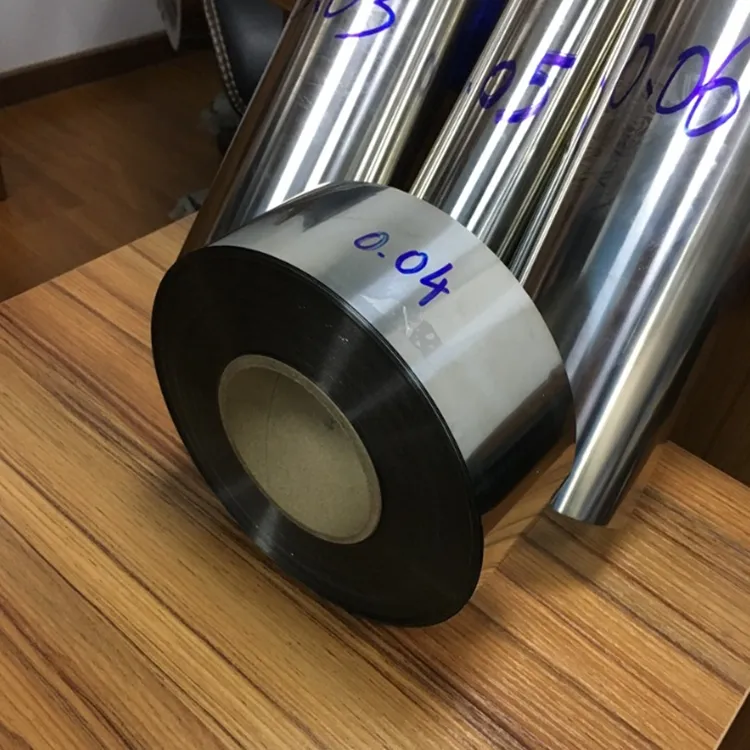
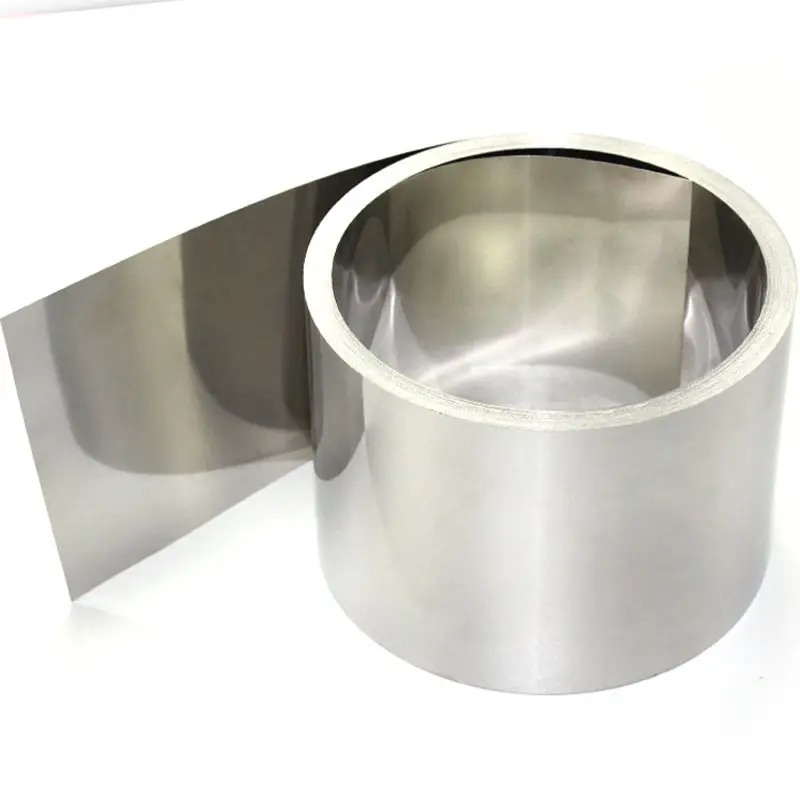 Leggi di piùVista Rapida
Leggi di piùVista RapidaStainless Steel Foil
Stainless steel foils are thin strips of stainless steel that are less than 0.2 mm in thickness and less than 300 mm in width.
Stainless steel foils offer a variety of advantages, including chemical stability, high strength-to-weight ratio, electrical insulation and corrosion resistance.
Stainless steel foil is used in the production of heat exchangers, capacitors and fuel cells; as well as in medical equipment and food processing machinery.
Stainless steel foils are a versatile material with many advantages. Its high corrosion resistance, good thermal and electrical conductivities and its ductility makes it an excellent choice for a wide range of applications.
Stainless steel foil is available in several different grades. These include austenitic series, ferritic series, martensitic series, duplex and super duplex series. Each grade has different alloying elements that contribute to the properties of the foil.
The most common grades of stainless steel foils are 304 e 316. These grades are supplied in thicknesses ranging from 0.009mm to 0.3mm. Other grades of stainless steel foil are also available upon request including 409, 430 and duplex 2205.
-
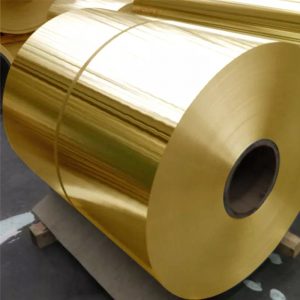
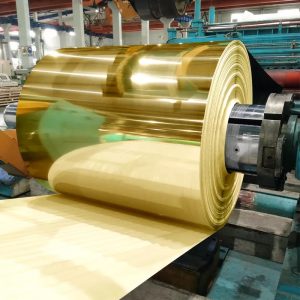 Leggi di piùVista Rapida
Leggi di piùVista RapidaBobina di ottone
La bobina di ottone ha un'eccellente plasticità (Il meglio in ottone) e ad alta resistenza, buona lavorabilità, facile da saldare, molto stabile alla corrosione generale, ma incline alla corrosione; La bobina di ottone è di rame e la lega di zinco prende il nome dal suo colore giallo.
Le proprietà meccaniche e la resistenza all'usura della bobina di ottone sono molto buone, e può essere utilizzato per fabbricare strumenti di precisione, Parti di navi, proiettili di pistole, and so on. L'ottone bussa e suona bene, Quindi strumenti come i piatti, Piatti, Campane, e i numeri sono fatti di ottone. Secondo la composizione chimica, L'ottone è diviso in rame ordinario e ottone speciale.
-
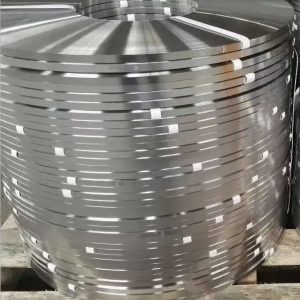
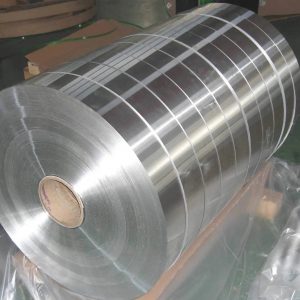 Leggi di piùVista Rapida
Leggi di piùVista RapidaNastri in acciaio inossidabile
Hot Rolled Stainless Steel Strips are produced from hot rolling billets or slabs and then use a cold rolling process. These processes improve strips mechanical properties such as stiffness coefficient and flexibility. Cold Rolled Stainless Steel Strips are obtained from annealed and pickled by cold rolling on polished rolls. As per the required thickness, cold rolling requires a number of passes through mill to effect reduction.
We supply SS Strips in various industries including food industries, chimico, elettrico, generator, shaft, cement & gas industries. The offered these Stainless Steel Strips in standards as well as customized dimensions as per the client’s requirement.
-
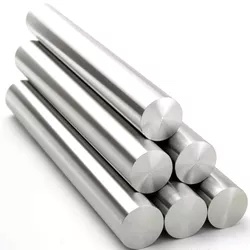
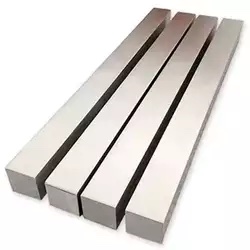 Leggi di piùVista Rapida
Leggi di piùVista RapidaStainless Bar
A stainless steel bar stock is often used for production line machinery or in other industrial settings where durability is required. Stainless steel round bar types can be found in many different shapes such as hexagon, quadrato, or round bars. Stainless bar stock is a material that is non-corrosive, corrosion resistant, and durable. It can be used in a variety of industries such as automotive, aerospaziale, costruzione, and manufacturing.
Stainless steel bar stock is the highest quality type of stainless steel in the industry. They are made with high-quality materials that make them resistant to corrosion and other environmental conditions. The stainless bar stock also has greater tensile strength than other types of stainless steel.
Stainless steel round rod products or round bars are commonly used for manufacturing products like car rims, motorcycle rims, bicycle rims, e altro ancora. These types of bars are typically made by rolling up sheets of stainless steel into long tubes before welding them together at the ends to create round rods or round bars that can be cut into smaller pieces
-
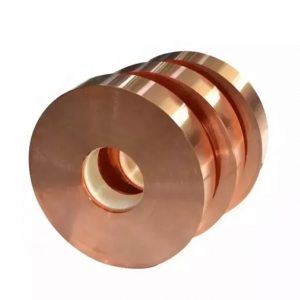
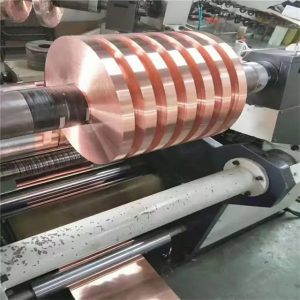 Leggi di piùVista Rapida
Leggi di piùVista RapidaStrisce di rame
Le strisce di rame hanno un'elevata conduttività elettrica e termica, Ecco perché le strisce di rame sono le migliori per l'avvolgimento del trasformatore.
Cosa c'è di più, Le strisce di rame trasferiscono il calore in modo più efficace rispetto ad altre strisce di metallo.
Le strisce di rame sono più malleabili e hanno un'elevata resistenza alla trazione. Resistenza alla corrosione, alto grado di stabilità, e la dissipazione del calore delle strisce di rame è superiore ad altri metalli.
Le strisce di rame sono utilizzate principalmente nei settori elettrico ed elettronico perché il rame non è magnetico e non scintilla. Le strisce di rame sono utilizzate principalmente negli scambiatori di calore, Avvolgimento trasformatori, Condensatori, e parafulmini.
Lo spessore del nastro di rame varia da 0,03 mm a 3,0 mm. Le strisce di rame possono essere prodotte in diverse larghezze e spessori secondo il requisito del cliente.
In caso di domande, Non esitate a contattare sales@grandsteeltube.com
-
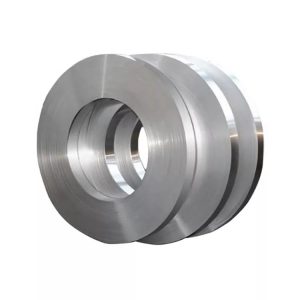
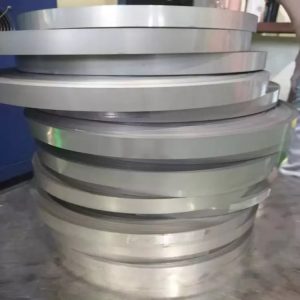 Leggi di piùVista Rapida
Leggi di piùVista RapidaTitanium Strip
Titanium strip is produced from the titanium sheet. Usually cold-rolled the titanium sheet by a small mill with annealing for several times, then slitting shear to titanium strips according to customer requirements. The advanced equipment, rolling process, process control, annealing temperature and return time control ensured its smoothness and finish, effectively improved the quality of our products.
-
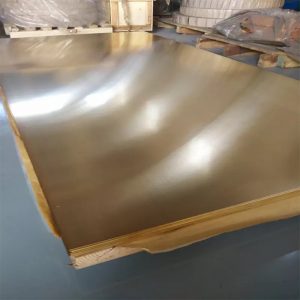
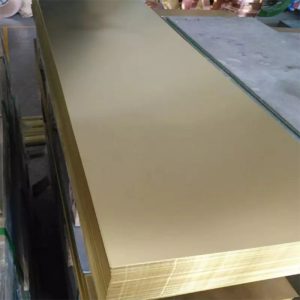 Leggi di piùVista Rapida
Leggi di piùVista RapidaLamiera di ottone
Lamiera di ottone a base di rame elettrolitico, zinco e oligoelementi come materia prima, attraverso la lavorazione mediante lingotto, laminazione a caldo, laminazione a freddo, trattamento termico, pulizia delle superfici, taglio, finissaggio, e poi imballare. Prestazioni dei processi dei materiali, plasticità, proprietà meccaniche, resistenza alla corrosione, Prestazioni e buona latta.
È stato ampiamente usato in elettrico, automobilistico, Comunicazioni, hardware, decorazione e altre industrie.
-
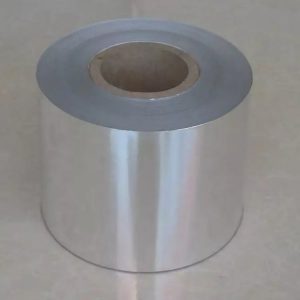
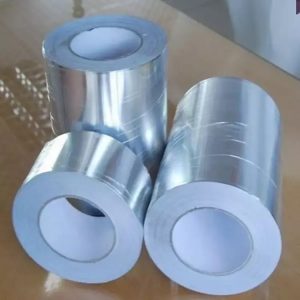 Leggi di piùVista Rapida
Leggi di piùVista RapidaAlluminio
Alluminio è alluminio preparato in sottili foglie di metallo con uno spessore inferiore a 0,2 mm (7.9 Mils); Calibri più sottili fino a 4 I micrometri sono anche comunemente usati. La pellicola domestica standard è in genere 0.016 millimetro (0.63 Mils) spesso, e il foglio domestico pesante è in genere 0.024 millimetro (0.94 Mils). E la pellicola del condizionatore d'aria può essere più sottile di 0,0047 mm, e alcuni fogli alimentari più sottili di 0,002 mm. La pellicola è flessibile e può essere facilmente piegata o avvolta attorno agli oggetti. Le pellicole sottili sono fragili e talvolta sono laminate con altri materiali come plastica o carta per renderle più forti e più utili. È usato industrialmente per una varietà di scopi, compreso l'imballaggio, Isolamento e trasporto. A casa, Le persone usano il foglio di alluminio per la conservazione degli alimenti, per coprire le superfici di cottura e avvolgere i cibi, come le carni, per evitare che perdano umidità durante la cottura.
-
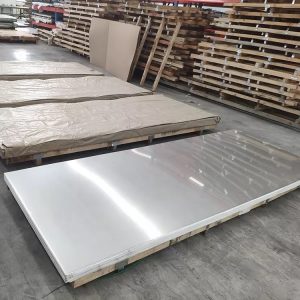
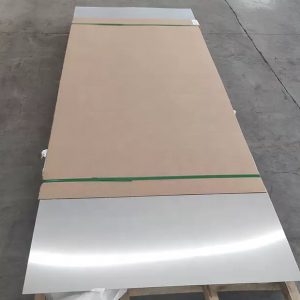 Leggi di piùVista Rapida
Leggi di piùVista RapidaStainless Steel Sheets
Stainless Steel Sheets & Plates are made up of austenitic steel mainly contain chromium and nickel with the addition of rare elements which offer high corrosion resistance, high tensile strength, excellent impact & toughness and high-temperature resistance at cryogenic temperatures. Moreover, these SS Sheets & Plates are highly demanded in various industries like chemical & Trasformazione alimentare, scambiatori di calore, fresco & ambienti marini di acqua salata, automobili e altro ancora.
-
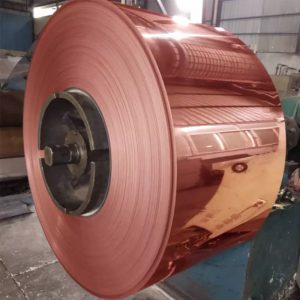
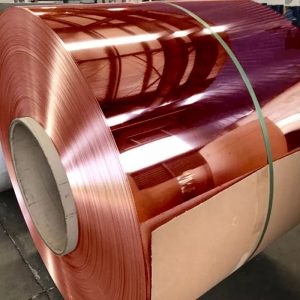 Leggi di piùVista Rapida
Leggi di piùVista RapidaBobine di rame
Può sembrare che una bobina di rame sia un semplice pezzo di filo arrotolato che può essere avvolto e messo in uso. Come per qualsiasi forma di prodotto industriale, Le bobine di rame devono essere progettate con precisione per adattarsi a un'applicazione. Il processo di avvolgimento deve essere completato con precisione per garantire la giusta distanza tra i fili e il diametro dell'apertura.
Ogni prodotto che utilizza bobine di rame richiede che venga effettuato un certo numero di giri per fornire la giusta quantità di resistenza. Calcoli imprecisi possono portare a inefficienza e possibile guasto della bobina o del dispositivo. Per questo motivo, gli ingegneri di Metal Associates garantiscono di aver esaminato attentamente le specifiche di un'applicazione in modo tale che il diametro, spaziatura, spessore del filo, e il numero di giri corrisponde esattamente al design del prodotto in cui verrà utilizzata la bobina di rame.
- DIN2391 Tubo d'acciaio di precisione
- EN10305-1/4 Tubo d'acciaio di precisione
- EN10305-2/3/5/6 Tubi di precisione
- Tubi di precisione serie SAE
- ISO8535-1 tubo di iniezione carburante
- Singolo/Doulbe Wall Bundy Tube
- Caldaia & Tubi in acciaio a pressione
- Tubo d'acciaio levigato / SRB senza saldatura
- Tubi in acciaio inossidabile capillare
- Tubi inossidabili senza saldatura & Cornamusa
- Tubi inossidabili saldati & Cornamusa
- Iniezione & Tubi della linea di controllo
- Tubi in lega di nichel & Cornamusa
- Tubi capillari non ferrosi
- Tubi in alluminio & Cornamusa
- Tubi in ottone & Cornamusa
- Tubi di rame & Cornamusa
- Tubi in titanio & Cornamusa
- Tubo alettato estruso/saldato
- Tubo di precisione non ferroso
- Tubi speciali in acciaio sagomati
- Bobina metallica / lamina / foglio / striscia

